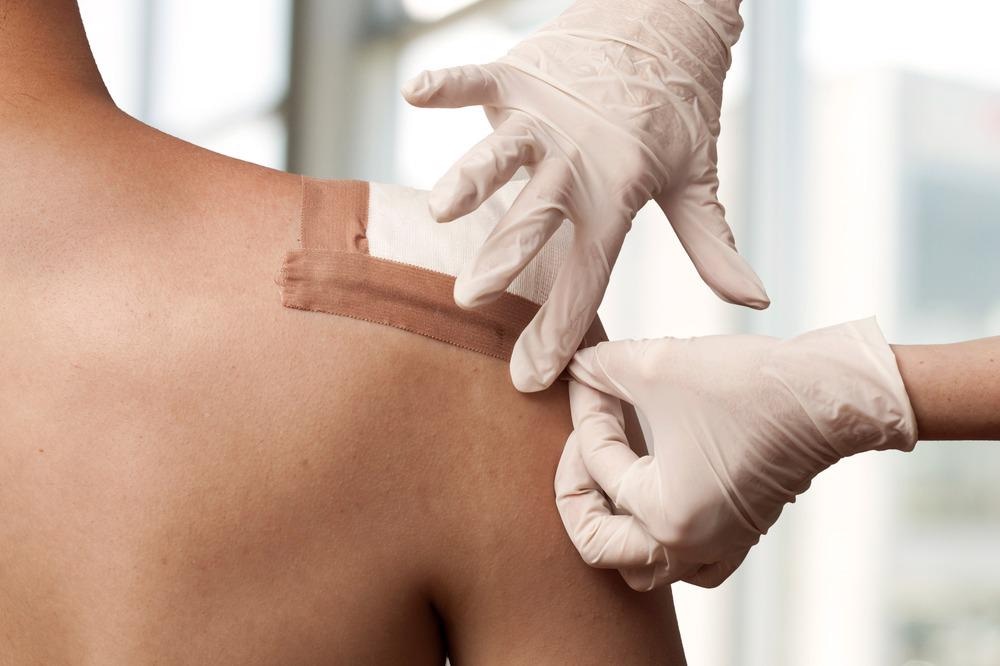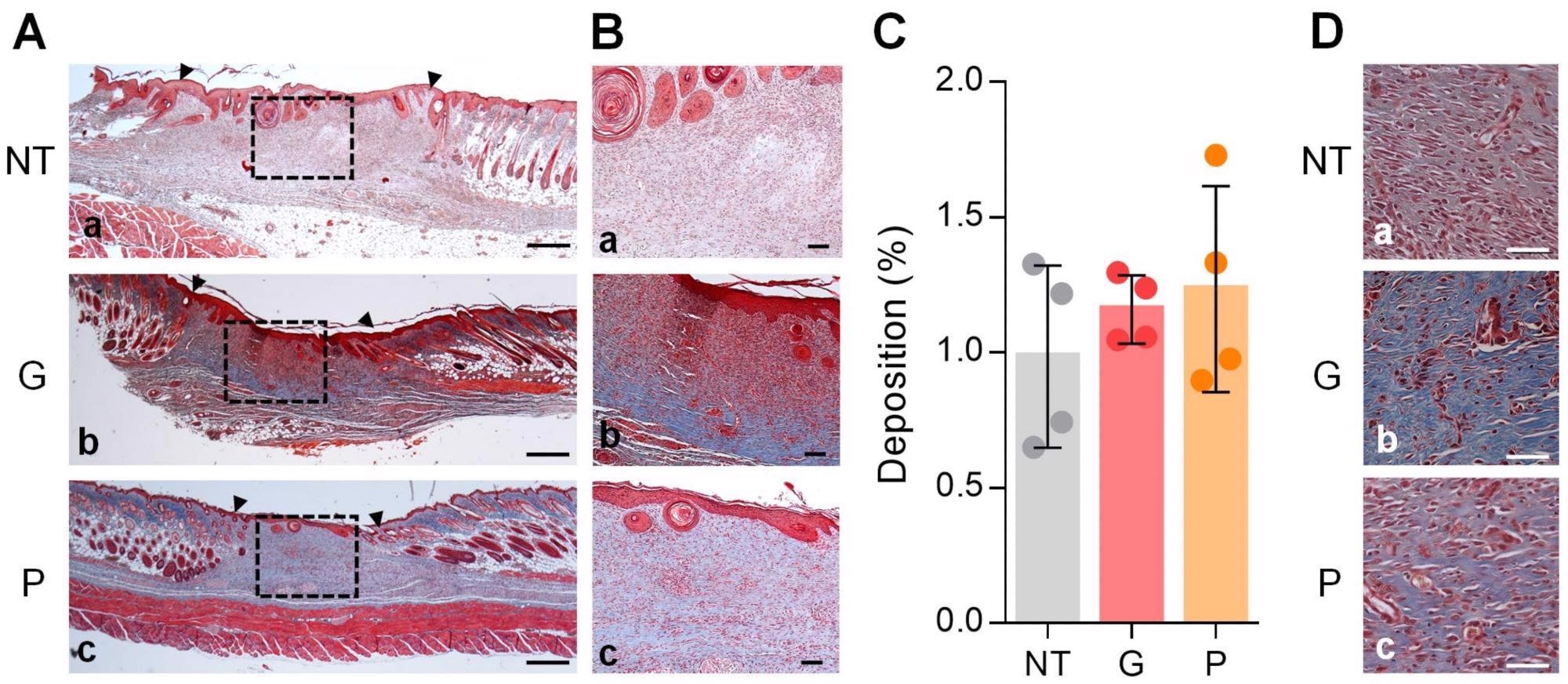Ensuring adequate, safe, and efficient wound care is a challenging task which places considerable burdens on both patients and healthcare systems. Recent research published in the Materials journal has investigated the potential to combine the advantages of powder-based scaffolds and collagen-based biomaterials into a novel powder capable of accelerating wound healing.

Study: A Pilot Trial Assessing the Feasibility and Efficacy of a Novel Powder for Rapid Wound Healing. Image Credit: Impact Photography/Shutterstock.com
Traditional wound healing involves inflammation, proliferation, and remodeling processes, but these processes can be hindered or otherwise adversely affected should patients present with conditions such as cancer or diabetes, or if they are obese or elderly.
It has been estimated that globally, more than 8 million patients require medical help around wound management. This places a significant financial and resource burden on healthcare systems, with complex wound care costing an estimated $10 billion USD in North America alone, and an estimated 2%–3% of European healthcare expenditure is spent on wound management.

Powder vs gel scaffold comparison and rehydration time within the wound bed. (A) Upon application of the powder scaffold to the open wound, representative images of powder rehydration as a function of time are depicted. Photographs were acquired at time of application—0 s, 30 s, 60 s, and 90 s. (B) Depiction of the original gel scaffold is provided for comparison. Image Credit: Verly, M et al., European Burn Journal
Numerous advances have been made with a view to facilitating, speeding up, and improving the efficiency of wound healing. Tissue-engineered skin substitutes often prompt adverse reactions in patients, and while scaffolds or autografts can be effective, these are often comprised of solid materials which are not able to effectively adhere to all wound types.
Powder scaffolds represent a more adaptable option for wound care and the promotion of wound healing, with numerous studies highlighting their effectiveness in providing a protective environment and promoting healing over even irregular wounds.
Collagen-based biomaterials offer another innovative means of improving the repair of soft tissues, with collagen offering a biodegradable, non-toxic means of promoting healing and therefore helping to minimize the risk of infection.
The researchers in the journal Materials had previously developed a nutritional and flowable cross-linked collagen-glycosaminoglycan-based scaffold with polyvinyl alcohol (PVA)-borate which could solidify upon exposure to temperatures between 35 °C and 37 °C.
This robust, flexible gel scaffold included the vitamins, minerals, and amino acids needed to promote cell growth, helping to improve wound healing.
The downside to this gel scaffold approach was that it could take up to 20 minutes to polymerize and required the use of a sterile liquid for reconstitution – factors which could limit its applicability to surface wounds, or in environments where it needed to be applied quickly or in the field.

Analysis of collagen deposition in wound tissue. Histological analysis by Masson’s Trichrome is shown. (A,B) The whole wound at 2x magnification (A) and within the wound at 10x magnification (B) is shown for NT (a), gel (b), and powder (c) conditions. Black dashed rectangles demarcate the wound areas shown at higher magnification on the right. Black triangles indicate the wound edges, whereby the wound is located between these markings. Scale bars for (A,B) represent 500 µM and 100 µM, respectively. (C) The ratio of collagen deposition across the wound bed for all treatment groups is displayed. The results are expressed as mean ± standard deviation, n = 4 across all treatment groups. (D) The wounds at 40x magnification are shown for NT (a), gel (b), and powder (c) conditions. The scale bars represent 50 µM. Image Credit: Verly, M et al., European Burn Journal
To this end, the researchers investigated whether or not a powdered version of this gel scaffold would be a viable option, seeking to determine its applicability and practicality when working with what they termed ‘full-thickness wounds.’
After conducting an initial pilot study, the researchers discovered that their novel powdered version of their gel scaffold could help to improve epithelialization in a murine model while ensuring that this did not disrupt key healing processes.
The powder was also easier to apply than its gel scaffold counterpart, and because this did not need to be reconstituted before being applied, it was much more straightforward to use and could potentially be applied in a wider range of settings.
The powder could be applied and distributed throughout the wound using a small scoopula, and because the moisture present in the wound environment was enough to start the powder rehydration process, this offered an additional advantage as a means of absorbing the wound exudate.
The powder was evaluated by measuring the speed of wound healing and looking for features that suggested healing was progressing; for example, the deposition of collagen implied that tissue was growing and repairing itself. This was done using wounds made on six mice.
Once the wounds had been treated with the powder, these were dressed and monitored. Powder treatments were applied twice - at the time of injury and again as there was evidence of tissue beginning to develop in the wound bed. The study continued until the wound had closed.
Most notably, the powder treatment exhibited similar wound healing potential to its gel scaffold counterpart but offered a number of advantages in terms of more rapid preparation and easier application.
Findings revealed that there was a notable increase in wound healing rate, but there was no observed increase in collagen deposition. This, therefore, suggested that powder application accelerates wound healing, but because the sample size was limited, further studies would be needed to evaluate this further and in more detail.
Despite the initial stages of development and the limited sample size, it is clear that this powder offers promise in supporting and accelerating wound healing. The powder could have particularly beneficial properties when used to treat burn wounds, and the researchers plan on exploring this further.
Disclaimer: The views expressed here are those of the author expressed in their private capacity and do not necessarily represent the views of AZoM.com Limited T/A AZoNetwork the owner and operator of this website. This disclaimer forms part of the Terms and conditions of use of this website.
Source:
Verly, Myriam, Emily Mason, Sara Sheikh-Oleslami, Reza Jalili, Breshell Russ, Ruhangiz T. Kilani, and Aziz Ghahary. 2021. "A Pilot Trial Assessing the Feasibility and Efficacy of a Novel Powder for Rapid Wound Healing" European Burn Journal 2, no. 4: 238-248. https://www.mdpi.com/2673-1991/2/4/18